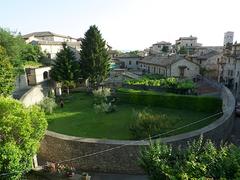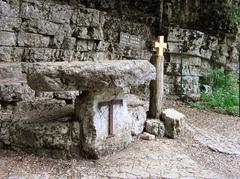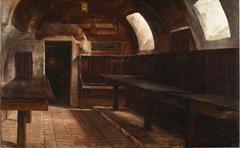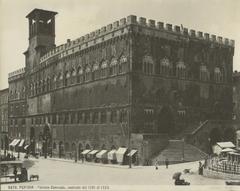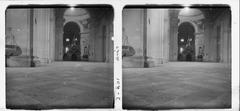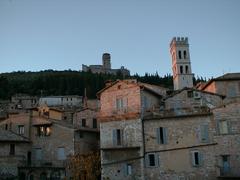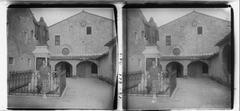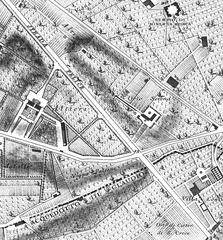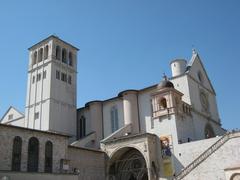Castle of Mora (Rocca Maggiore) Visiting Hours, Tickets, and Comprehensive Guide to Assisi Historical Sites
Date: 14/06/2025
Introduction to the Castle of Mora and Its Historical Significance
Assisi, nestled on the slopes of Mount Subasio in Italy’s Umbria region, is celebrated for its enchanting medieval character and profound spiritual legacy. Dominating the town’s skyline is the Castle of Mora, also referred to as Rocca Maggiore, an imposing fortress that bears witness to centuries of strategic conflict, architectural innovation, and cultural development. Its dramatic silhouette, visible for miles, offers a compelling backdrop to Assisi’s historic landscape and provides visitors with panoramic vistas over the Umbrian valley. Whether you are drawn by history, culture, architecture, or simply breathtaking views, the Castle of Mora is an essential experience in Assisi (Discover Walks, Italy Notes).
Table of Contents
- Early Origins and Strategic Importance
- Medieval Turmoil and Reconstruction
- Architectural Features and Evolution
- Decline, Preservation, and Current Condition
- Visiting Hours, Tickets, and Accessibility
- Directions and Access
- Nearby Attractions
- Special Events and Guided Tours
- Travel Tips and FAQs
- Conclusion and Resources
Early Origins and Strategic Importance
The Castle of Mora (Rocca Maggiore) is one of Assisi’s defining fortresses, alongside Rocca Minore. Its origins trace back to the late Roman era, when the site was first fortified as a defensive outpost safeguarding Assisi and its agricultural hinterlands. By the Middle Ages, Assisi’s elevated position rendered it a critical stronghold in the ongoing struggles among regional powers. The Castle of Mora, perched high above the town, served as both a military bastion and a symbol of local authority, defending against rival cities like Perugia and encroaching imperial or papal forces (Discover Walks, Italy Notes).
Medieval Turmoil and Reconstruction
Throughout the 12th and 13th centuries, central Italy was continuously embroiled in political upheaval. The Castle of Mora was repeatedly attacked and rebuilt, reflecting the region’s volatility. In 1173, Assisi was sacked by forces led by the Archbishop of Mainz under Emperor Frederick Barbarossa, leading to major damage to its fortifications. After the town expelled imperial forces in 1198, the castle was partially restored. The 14th century saw significant rebuilding under Cardinal Egidio Albornoz, who reinforced the castle as part of a broader military initiative in Umbria (Italy Notes, Discover Walks).
Architectural Features and Evolution
Rocca Maggiore exemplifies medieval military architecture. Its design features robust limestone walls, three prominent towers, and a main keep that served as both lookout and last stronghold. The fortress’s elevated position offered a strategic advantage, enabling early detection of advancing armies. Over time, the castle’s defensive features were enhanced to address evolving siege technology, notably in the 14th and 15th centuries. By the 16th century, as Umbria stabilized under papal rule, the castle’s military role waned (Life in Italy).
Key Architectural Highlights
- Walls and Towers: Massive limestone blocks, battlements, and defensive towers.
- Gatehouse: Fortified entrance with remnants of drawbridge and portcullis.
- Interior Courtyard: Central hub with remnants of barracks, storerooms, and a chapel.
- Panoramic Terrace: Offers 360-degree views of Assisi and the Umbrian valley (Earth Trekkers, Passport & Pixels).
Decline, Preservation, and Current Condition
As the region’s political climate stabilized, the Castle of Mora gradually fell into disuse. Parts of the structure were dismantled, and its stones repurposed locally. In the 20th century, restoration efforts sought to stabilize and partially reconstruct the surviving towers and walls, preserving the castle as a monument to Assisi’s medieval heritage. Today, ongoing conservation ensures that visitors can safely explore much of the site while appreciating its authentic atmosphere (Italy Notes).
Visiting Hours, Tickets, and Accessibility
- Opening Hours: Generally open daily from 9:00 AM to 6:00 PM (summer hours may extend to 8:30 PM). Hours are subject to seasonal variation and restoration work—check the official Assisi tourism website before visiting (Salt in Our Hair).
- Tickets: Admission is typically €8 for adults, with discounts for children, students, and seniors. Children under 12 may enter free. Purchase tickets online or at the entrance to avoid queues in peak season.
- Accessibility: The castle’s steep, uneven paths and staircases may be challenging for visitors with mobility issues. The lower courtyard is more accessible, but the main tower and ramparts are not wheelchair-friendly. Sturdy, non-slip footwear is essential.
Directions and Access
The Castle of Mora is a 15–30 minute uphill walk from Assisi’s historic center, through picturesque medieval streets (The Italian on Tour). Taxis can drop visitors closer to the entrance, but the final approach remains pedestrian-only. Public parking is available at Piazza Porta Nuova. If arriving by train, local buses or taxis connect the station with the town center.
Nearby Attractions
Combine your visit with other iconic Assisi sites:
- Basilica di San Francesco: UNESCO-listed, renowned for Giotto’s frescoes.
- Piazza del Comune: Medieval square with the Temple of Minerva.
- Cathedral of San Rufino: Romanesque church with notable history.
- Mount Subasio: Offers hiking and panoramic natural landscapes (Salt in Our Hair).
Special Events and Guided Tours
- Guided Tours: Available in multiple languages, providing historical context and access to select areas. Book in advance during busy periods.
- Events: Look out for medieval reenactments, concerts, and evening tours that bring the fortress to life.
- Photography: The castle’s towers and ramparts are prime spots for panoramic photos, especially at sunset or sunrise.
Travel Tips and Frequently Asked Questions
When is the best time to visit?
Spring and autumn offer pleasant weather and fewer crowds.
What should I wear?
Comfortable walking shoes, weather-appropriate clothing, and sun protection.
Facilities:
Restrooms are located near the entrance. A small gift shop sells souvenirs and refreshments; food options are limited, so bring water and snacks.
Is the castle suitable for children?
Yes, but supervise children closely, especially near steep drops and ramparts.
How long should I plan for my visit?
Allow 1–2 hours to fully explore the castle and its museum.
Are there accessibility provisions?
Accessibility is limited due to historic architecture. Lower courtyards are more manageable; contact staff in advance for assistance.
For additional details, check Salt in Our Hair and The Italian on Tour.
Conclusion
The Castle of Mora (Rocca Maggiore) is more than a relic of the past—it is a living symbol of Assisi’s resilience, artistry, and enduring cultural identity. From its strategic origins through turbulent medieval times to its role as a contemporary cultural venue, the castle invites visitors to step into history while enjoying some of Italy’s most stunning vistas. To maximize your experience, check current hours, secure tickets in advance, and explore the site in combination with Assisi’s other historical treasures.
Ready to explore Assisi?
Download the Audiala app for interactive maps, event updates, and insider travel tips. Follow us on social media for the latest news and visitor inspiration.
Recommended visuals: Panoramic views from the ramparts, dramatic sunset shots, and images of the medieval towers. Alt text should include “Rocca Maggiore Assisi panoramic view” and “Castle of Mora medieval towers.” Interactive maps and virtual tours are available on official tourism websites.
Sources and Further Reading
- Discover Walks - Top 10 Facts About Assisi, Italy
- Italy Notes - Assisi Stories
- Summer in Italy - Rocca Maggiore Castle
- Life in Italy - Rocca Maggiore Assisi
- Walks of Italy - Visit Assisi Italy Attractions
- Tourist Secrets - Rocca Maggiore: An Unforgettable View of Assisi
- Earth Trekkers - Best Things to Do in Assisi
- Knight Templar - Architectural Marvels: The Design Principles Behind Medieval Castles
- Salt in Our Hair - Assisi Travel Guide
- The Italian on Tour - The Local’s Guide to Assisi
- EaseWeather - Assisi June Weather
